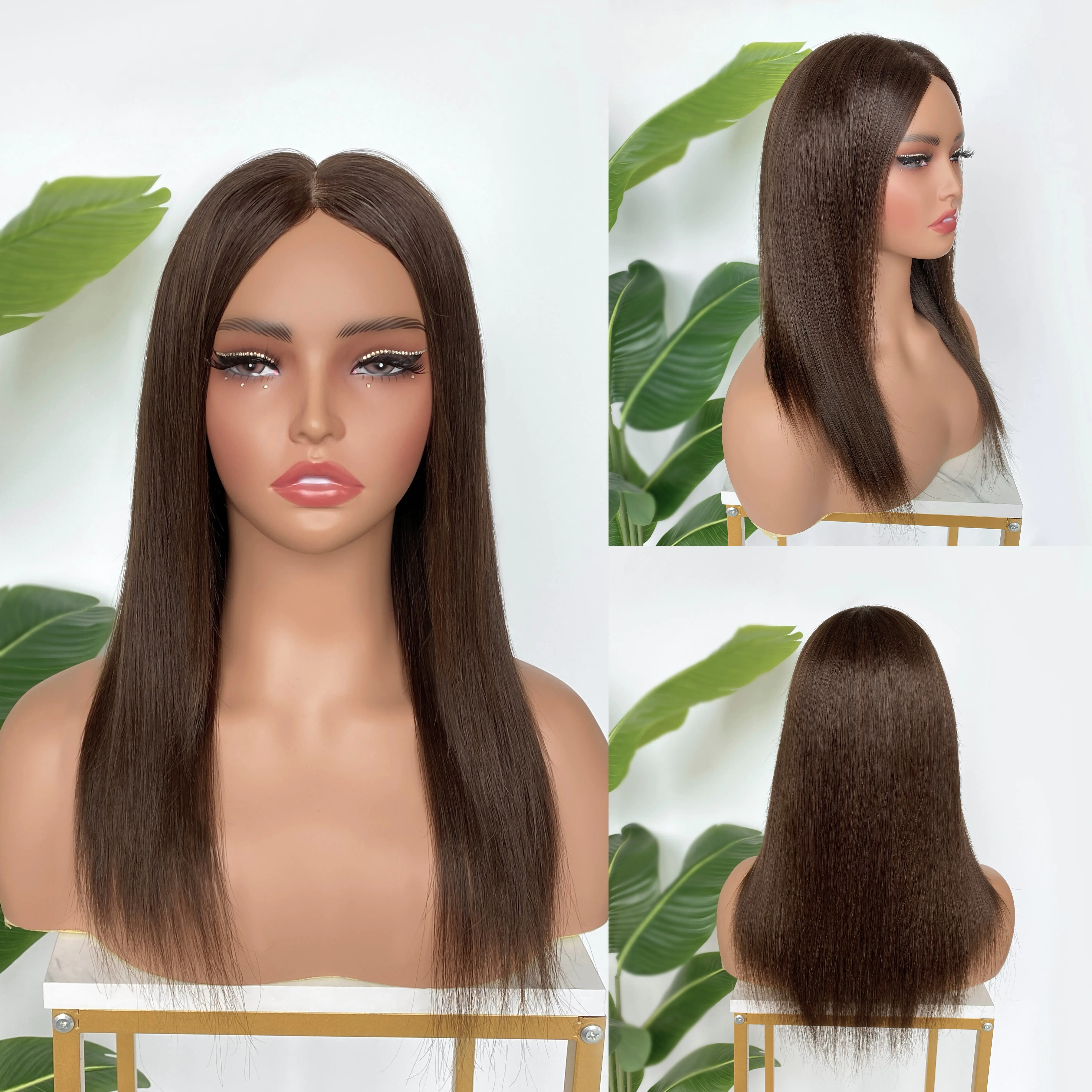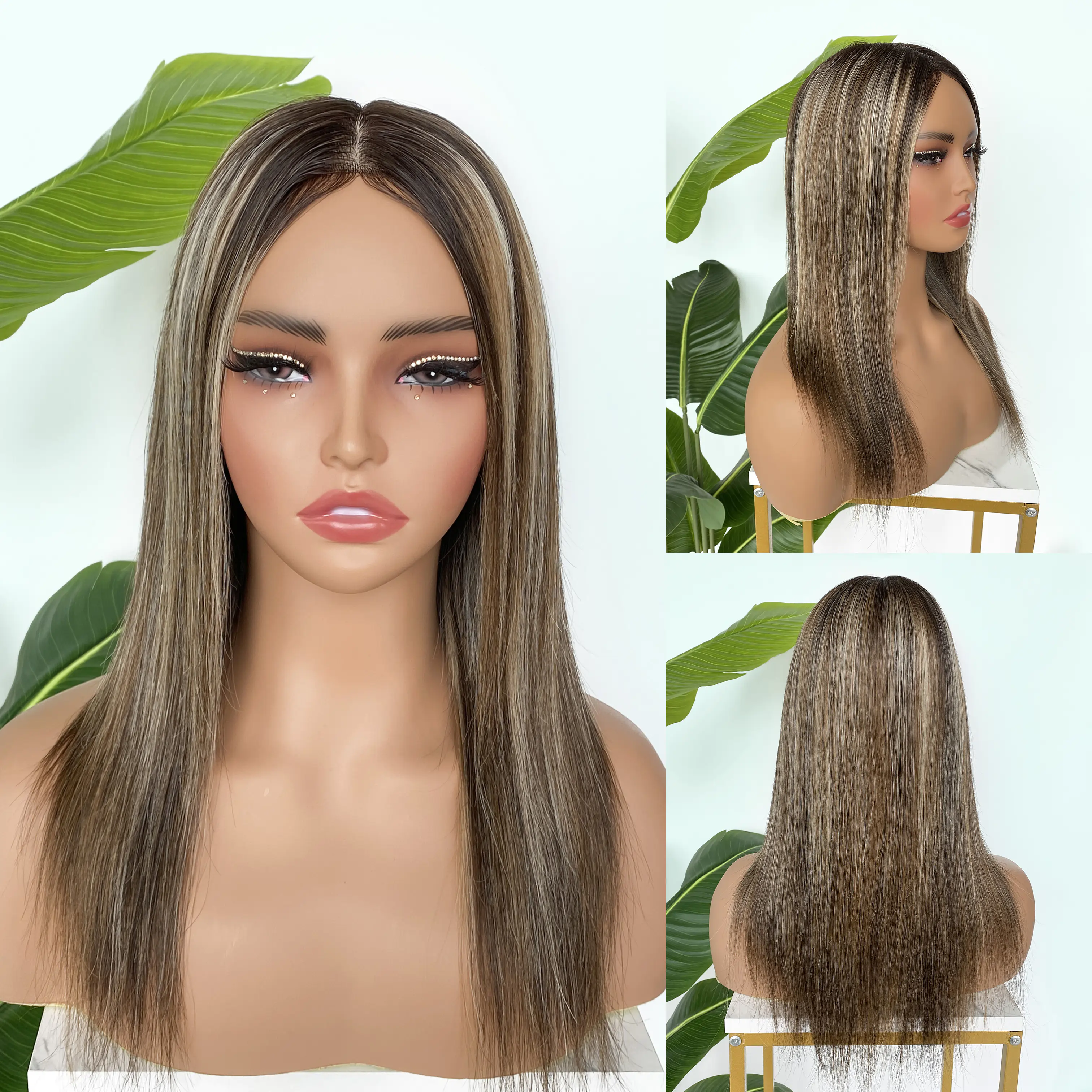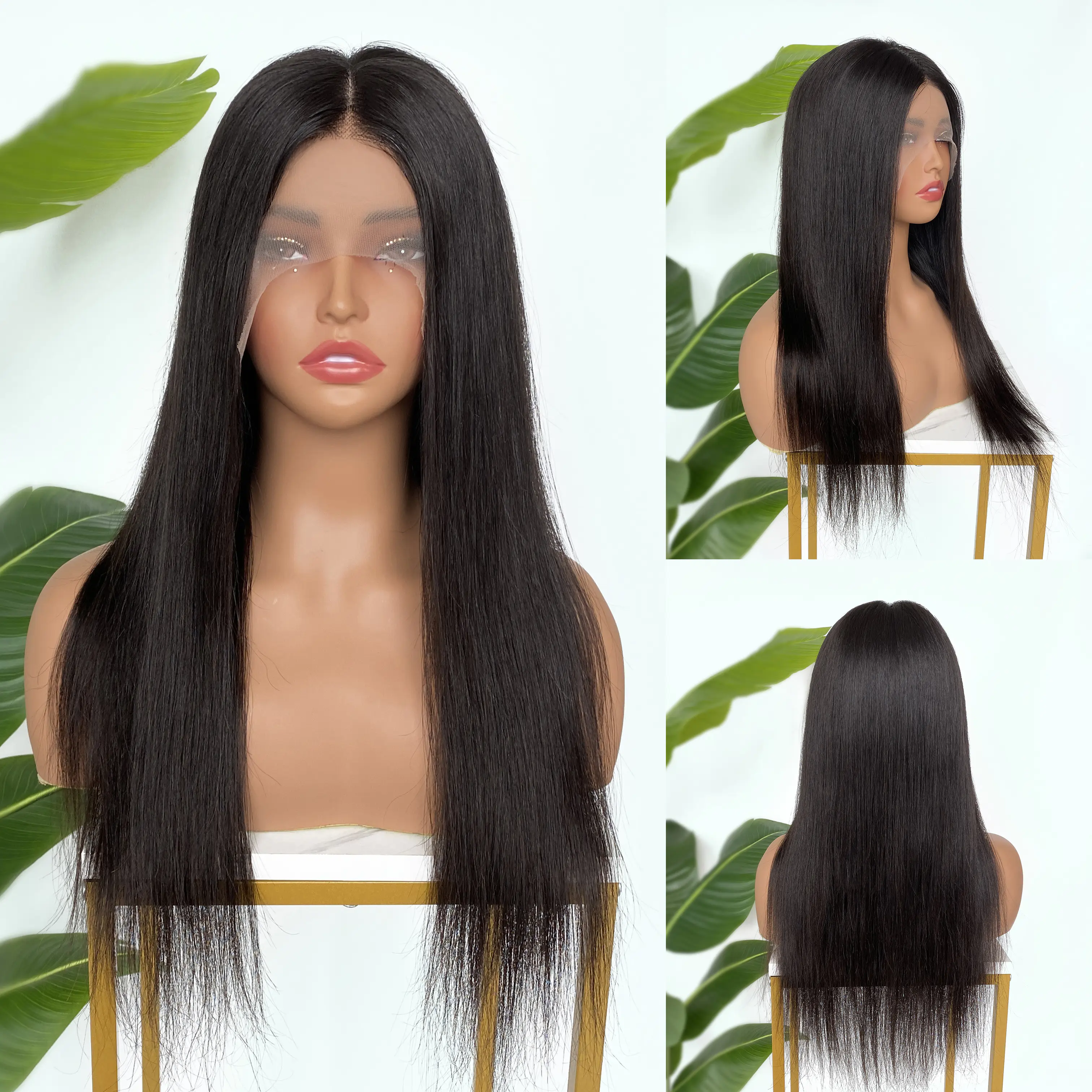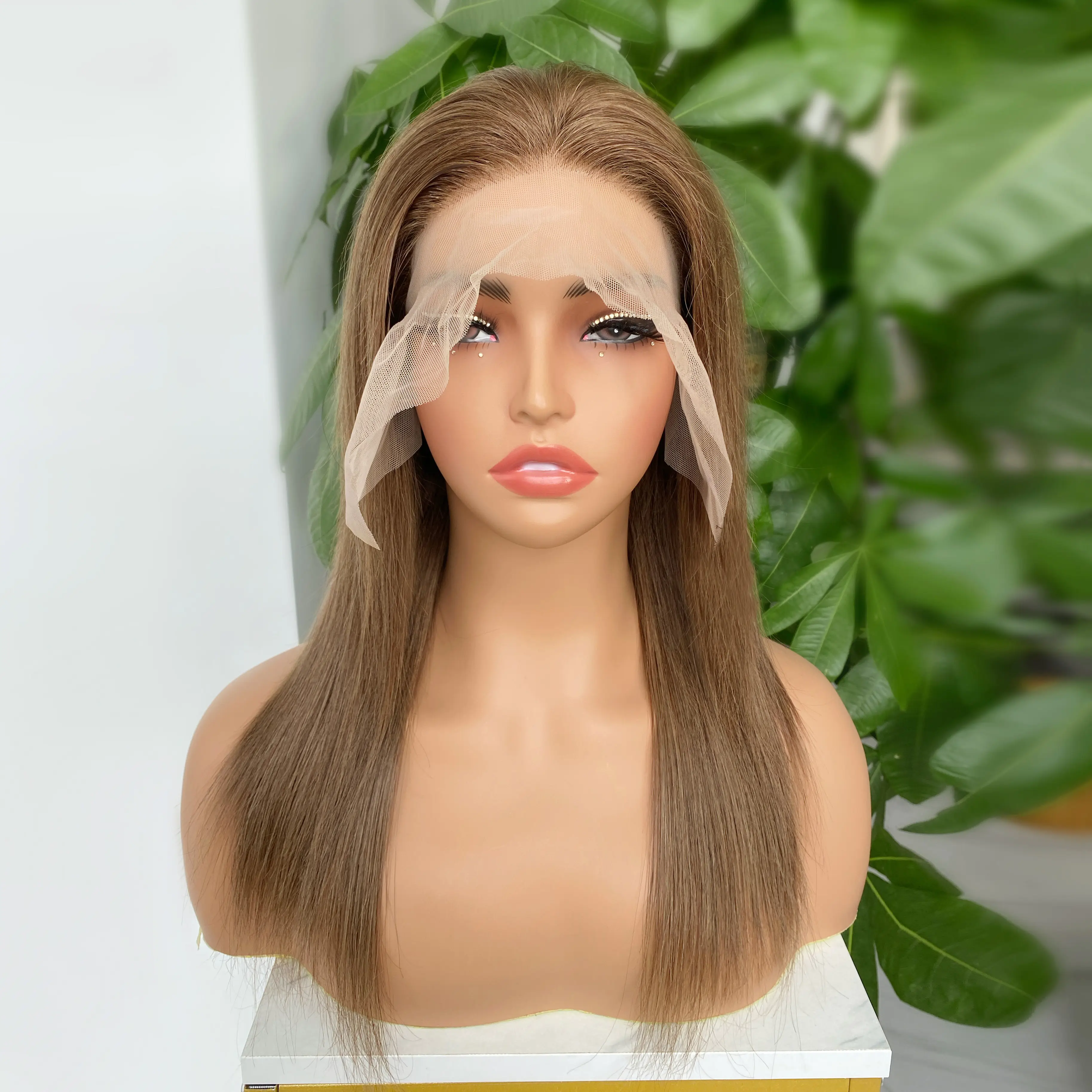Clip-Ins
Clip-in hair extensions have clips sewn to the base of each weft. Those clips are then snapped open and applied to the roots of your hair and then snapped shut. Each weft is layered beneath your own hair to create an instantly longer and fuller look while remaining completely invisible. This type of wig can be operated by yourself at home, which is simple and fast, and does not require the help of a hairdresser. Its biggest advantage is that it will not cause any damage to the hair.
Tape-Ins
Tape-in hair extensions are pre-taped and then taped or glued together on both sides of a section of your hair. This process requires a professional to help you through, because you need someone to adjust them with your hair roots and then glue them with a heated tool. It's a semi-permanent solution, you'll need to replace the tape every 1-2 months, and the Tape will expire if it's left too long. Unlike Clip in, it does some damage to your hair because you need to use glue and heat tools on your own hair.
Sewn-Ins
Sewn-in extensions is a lengthy process that starts off by braiding your natural hair into cornrows, then using a needle and thread to sew the weave into the braid or cornrow. This may take several hours to complete, and It is more suitable for people with thick hair due to the tight application and strain it can cause on the scalp. Because its operation is more complicated, so you need professional people to help you.
Micro Links
Micro link hair extensions are applied via a small silicone-lined bead that attaches tiny wefts of hair to small sections of your natural hair. A special tool is then used to secure the bead in place. A professional is required to apply these extensions due to the complexity and tools involved, and it can take two hours to complete. While this particular style of hair extensions does not include heat or glue, the pressure and pulling of the micro link extensions can be damaging on the hair.





